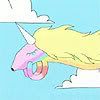Thursday, February 22, 2007
Art Event: S-E-X-Oh!, 2/17/07
However, I think that there were one or two points of the play that could be improved, that I felt threw me out of the flow of watching the performances a little bit. The first one was the Spanish. I knew that all of the performers would be Latina so I figured that there would be Spanish in the play, I definitely agree with that. However, usually when there is another language in a predominantly English-language performance, there tends to be enough context surrounding the use of the second language for non-speakers of that language to understand the usage and follow along. That was mostly true in S-E-X-Oh!, but there were some times that it wasn’t and I felt left out. (There were other people in the audience laughing along, but they obviously had a better grasp of Spanish than I.)
So, in conclusion, I felt that the performers presented their material well and engagingly, resulting in an enjoyable performance.
Tuesday, February 13, 2007
Hope Chest Concept Statement
The box (approx. 10" x 10" x 10") will be enclosed on all sides except for one; on this final side will be a black curtain that the viewer moves aside to see inside the box. Rauschenberg will be on the outside, that is, the outside of the box will be covered in cloth and paint echoing Rauschenberg's "Bed". The interior will be white paint over newspaper, in homage to Johns's "White Flag". There will be a tiny little sheep inside, like one of Rauschenberg's combines in minerature, but instead of it wearing a tire it will be wearing Johns's famous "Target" image, except in three dimensions.
Also, I'd really like the box to be illuminated from the inside. Both of them used lightbulbs, flashlights, and other electrical light imagery, so I feel like that would be important to include. I also feel like the light would intruige the viewer, and make them more inclined to pull aside the curtain and look inside. It also serves the very practical purpose of illuminating the interior to make it easier to see.
I feel that the piece can reflect their relationship, because the imagery is separate, it is united by virtue of being a part of the same object.
This entire project should have one keep in mind that art is never created in a vaccuum. An artist is affected by everything they experience, whether that experience is the politics and culture of the time, as it is reflected in Johns's and Rauschenberg's artwork, or one's relationships with other people.
Saturday, February 10, 2007
Lecture: John Baldessari, 2/7/07
I really enjoyed the lecture on John Baldessari. I had heard the name before, and had been shown examples of his work (some of the Blasted Allegory) in another art class, as examples of forcing narrative by sequencing images and words, based on the preconstructed way that we read and how we assume that images placed next to each other are related.
I thought it was very interesting how he played with preexisting thought patterns (like the creation of narrative), and constructions like linguistics and the connecting of words with images. I also found it interesting how he played with art's "basic conditions"-- wondering if art required a viewer, like with "This image is not to be looked at"; if art needs to work on more than one level, as in "A work with only one property"; and the presence or lack thereof in the work of art versus the viewer/reader as producer of content. I also liked his concept of "right" versus "wrong" art, as displayed in some of his photographs, that the art requires the belief of the viewer that the work is art to become art.What I liked best about his art was the irony and humor involved within it. Often art can be either Serious Business™ and therefore accepted by the art world, or it can be humorous and therefore not taken as seriously as Serious Business™ art because the humorous art is seen only as light amusement. Baldessari's art was humor and Serious Business™ at once because it was questioning the art world's conventions using humor and irony.
